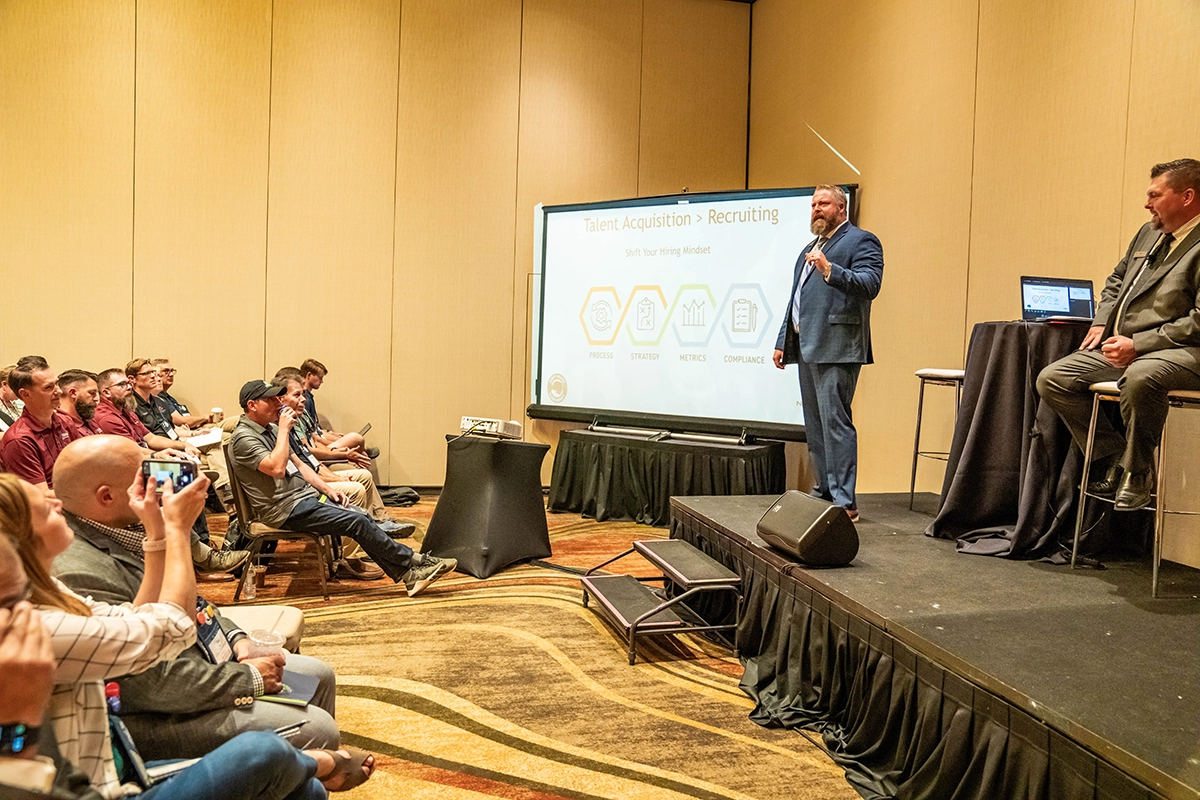I’ve been involved with recruiting for nearly 20 years, and I’ve seen a lot of recruiting strategies and trends come and go. A few years ago, I saw a new term: talent acquisition. At the time, I figured the term was just the newest buzzword for recruiting. Big deal. I moved on and continued to call what I do “recruiting.”
Last year, we hired a new Recruiting Coach, Jason Florek. Not long after starting, he asked me why we use the word “recruiting” as opposed to “talent acquisition.”
I asked, “Why shouldn’t we? What’s the difference?”
His response changed my thinking on the matter.
Jason told me that recruiting involves trying to convince someone to do something. When we’re recruiting, we’re attempting to convince people to work with us. Talent acquisition, on the other hand, is using strategies, tactics, and processes for identifying, recruiting, and retaining talent for organizations. It involves developing, implementing, and evaluating programs for sourcing, hiring, orienting, and retaining talent. Talent acquisition also considers the cultural impact an individual will have on an organization.
That makes sense. I’m on board now. And if we all want to switch from being a recruiting organization to being a talent acquisition organization, where do we start?
The first thing to do is create an Employer Value Proposition (EVP). An employer value proposition is an explanation of why someone should consider working at your company. High-performing people (the people you want working at your organization) are currently working … somewhere else. Why should they consider leaving their current situation to work with you? What sets your organization apart from others in this industry? Now, these aren’t easy questions to just answer off the cuff. Pay and benefits are important, but it’s more than that.
Three major components make up an effective EVP.
The first (and most important) component is Leadership and Culture. As author John Maxwell says, “Everything rises and falls on leadership.” Your leadership offers a framework for your company’s culture. As a leader, how do you show up to work every day? Are you connecting with your employees? Are you checking in on them? How does your presence make them feel? Are you facilitating opportunities for them to connect? When you take ownership of how you show up as a leader and commit to showing up as your best self, you’re creating the foundation for a strong company culture, which then allows your employees to really flourish. Strong relationships between employees and leadership are the real reason people stay at organizations. Relationships are the foundation of a strong company culture.
Another important part of your company culture is your business’s mission, vision, and values. Having a strong set of mission/vision/values statements and living them goes a long way.
The second major component of an effective EVP is your Products and Services. As a recruiter, when I talk to someone from outside of the industry, the first thing I want them to understand is that the skilled trades are an essential service. They’re always evolving, but the trades can’t be offshored or outsourced. This industry literally protects people’s health.
And protecting people’s health and comfort should be important to the employees you recruit. Years ago, when I was training a roomful of technicians, I asked them what gets them up in the morning. The overwhelming response was, “I love using my skills to help people and solve their problems.” The best technicians in this industry get a great deal of satisfaction from helping others, including their team members and customers. Of course, some technicians choose commercial, new construction, or industrial roles, and that’s great, too, because we need their skill sets and expertise as well. However, keep in mind that your mission as the owner of a residential HVAC company, is to acquire technicians who love helping people.
The third component of your EVP is Total Rewards. There’s more to rewards than compensation and benefits. Total Rewards also includes training and development opportunities. It includes employees’ work environment – is your shop environment clean and organized? Is it comfortable? Are the trucks stocked and well-kept? It includes the work/life balance for your employees. Do you seek to create a flexible work schedule to help prevent employee burnout? Do your employees have enough time off? Total Rewards even includes your level of community involvement and fostering a sense of belonging, affirmation and meaning. People want to be proud of where they work, and companies that are active in their community have better employee retention. No, your work colleagues are not family, but they are a team. And the best teams work well together and support one another, which helps build a successful organization.
As you can see, creating an effective employer value proposition is the way to know you’re heading in the right direction for talent acquisition. Knowing what your company brings to the table is the first step toward recruiting the best and the brightest in this industry.
Steffan Busch is an Executive Recruiter and Talent Acquisition Coach for Nexstar Network, where he helps support the world’s best tradespeople on their quest to become the world’s best businesspeople. Contact Steffan at SteffanB@NexstarNetwork.com.




